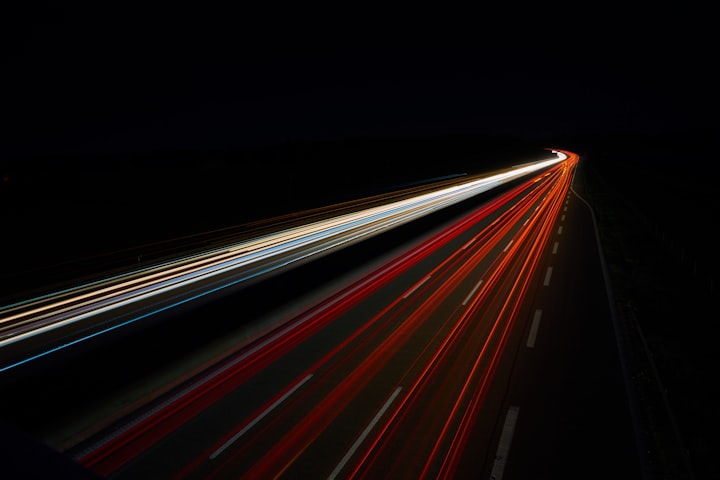
The speed of light can be measured by the time delay between light pulses from a laser or LED display screen, with an oscilloscope with a correction of less than one nanosecond. The difference between light and sound is the same, but there are two basic methods used for most measurements of their velocity. The first method is based on measuring the time it takes light or sound to cross a known distance and dividing that time during transport to get a certain speed.
The reason why today we can accurately calculate the speed of light in a vacuum is that it is a constant variable that can be measured with lasers, and in laser experiments, it is difficult to dispute the results. The first recorded discussion of light speed comes from Michael Fowler, who thought Aristotle was closed when he quoted Empedocles as saying that light from the sun takes time to reach Earth and that Aristotle argued with Descartes when he said light travels too fast.
In his book Optick, published in 1704, he reported on Romer's calculation at a moderate speed of light and gave a total of seven to eight minutes at a time that light travels from the sun to the earth, corresponding to a modern standard of 8 minutes and 19 seconds. In the 19th century, Hippolyte Fizeau developed a method of determining speed based on the time estimates of a plane from Earth and calculated a speed of 315,000 km / s.
After Maxwell published his theory of electromagnetism, it was easy to calculate the speed of light by measuring the penetration of the magnetic field and allowing electricity into free space. The French philosopher Hippolyte Fizeau is credited with the invention of the first non-star measurement in 1849 when the light was transmitted through the rotating wheel that reflected light to a distant mirror. Louis-Fizeau and Leon Foucault were able to produce an updated version of Galileos experiments with a complex combination of rotating mirrors and advanced measurement technology and developed a series of excellent measurements of light speed.
The S methods have improved many of the measurements made by Albert A. Michelson (1852-1931). Scientists have used astronomical observations, gears, rotating mirrors, radio interferometers, hole resonances, and lasers to improve measurements.
In 1983, the meter was redefined as the light-blank range in the International System of Units (SI) at 1/299.792.458 seconds. The 1983 meter was defined as the distance traveled by a vacuum light in a time of 1/29,999,924,858 seconds (88% of the fixed light speed, 299,792,458 m / s, definition described above). An international agreement has been defined as a simple travel distance in a space at intervals of 1 / 29.979.2458 seconds.
One meter is the distance traveled by light radiation at 1/299,792,458 seconds (second), depending on the decomposition of Cesium by 133 atoms. The meter is defined as the light distance traveled by 1/299, 792, 458 seconds. The definition of a gauge is older than the definition of seconds measuring using mirror time methods based on astronomical observations and the speed of light is 299,792,458 non-integer bits with no error measurement barriers.
Estimates have been in the true value of 9.3 million miles, but it seems that Romer and Huygen Romer used the data for a much shorter time than the one used to find the true value. The distance from the sun to light is calculated at about three-quarters of a fixed value of 1,863,900 miles per second.
It is advisable to measure the speed of light between two lower points without making indirect conclusions based on the obvious small differences in the position of the stars. If you want to measure the speed of light from a distance, it is easy to test it: enter a simple pulse (T 0) on the screen and the time it takes you to get there. As the Earth orbits the Sun itself, which rises from the Milky Way and travels through space, the speed of light to measure light from the Sun is the same as standing on a galaxy and calculating the same speed from Sun.
With the most accurate measurements, the speed of light will remain the same regardless of whether the spectator is standing on the surface of the earth or flying the world's highest plane. This explanation makes sense as the speed of light in a vacuum can be measured by any viewer of the same value and is subject to test tests (see Frequently Asked Questions - Article on light speed).
To this day the meter is defined, the speed of light was a measure of the average distance of the earth and was used to measure distances in space. The astronomical distances are reflected in the bright years in popular science and media books.
Galileo's exploration distance of less than a mile was too small to detect the difference but he found the light moving about ten times more than the noise. In 1728, English astronomer James Bradley calculated the speed of light by observing astronomical observations that indicated their apparent change in their position on Earth as a result of the movement of the Sun. By measuring the changing and accelerating angle on Earth, you calculate the known data at that time and come up with a direct number.
In 1670, Danish astronomer Ole Romer used the eclipse of the moon Jupiter Io as a chromatometer of light speed and made the first accurate measurement of this speed.
About the Creator
Zuvin Maharzan
Always have been a MCU lover.





Comments
There are no comments for this story
Be the first to respond and start the conversation.